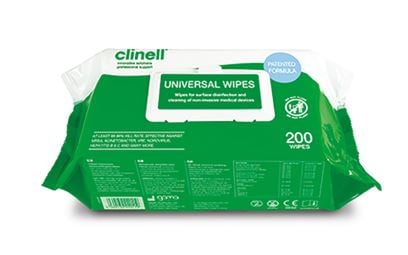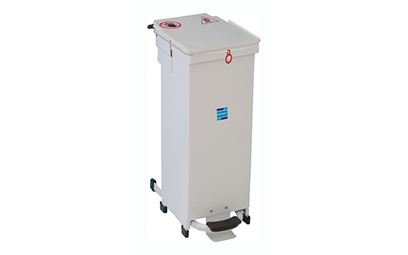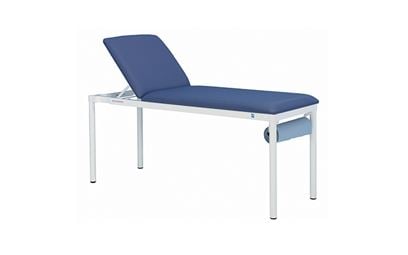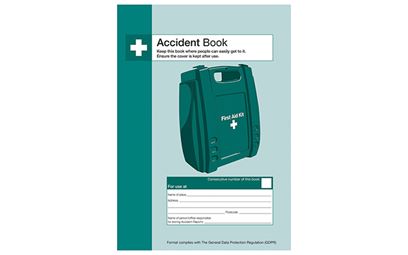First aid equipment for schools
Your school’s legal responsibilities and your duty of care include protecting the wellbeing of staff and students at all times.
Also in this section
- Blood pressure monitor buying guide
- Defibrillators - a guide for rescuers
- Defibrillator guide for first time buyers
- Fire extinguisher buying guide
- Gloves buying guide
- Guide to defibrillator maintenance and upkeep
- How to dispose of old fire extinguishers
- The role of the first aider
- What to put in a first aid kit
- When to call an ambulance
- Workplace first aid kit buying guide
- Workplace first aid rooms or areas
- Do first aid kits expire?
Find a course near you
Search our first aid supplies shop
Do you have the right first aid supplies?
Ensure you have the right first aid supplies for:
- your school premises
- any school vehicles
- your staff members.
What should you consider for you school?
- equipment for your first aid room
- a life saving defibrillator
- fire safety supplies , fire blankets, and appropriate fire extinguishers
- additional first aid kits
- personal protective equipment
- posters
- emergency signs
- health and safety supplies
- evacuation chairs for people with mobility impairments.
How many first aid kits should a school have?
Our free online requirements calculator is a useful guide in helping you determine how many first aid kits you need in your school. Read our first aid kit buying guide to find the right first aid kit for you.
Your risk assessment and assessment of your first aid needs will give you a more accurate quantity as there are several specific factors to consider:
- How many sites and split levels does your school occupy? You need to ensure that there is a first aid kit within quick and easy reach of all areas.
- Are there remote areas, for example, distant sports fields or playgrounds?
- Are there any higher risk areas, such as science labs or workshops? These areas may need extra kits or larger kits with additional contents.
- Are there any off-site activities? You should consider travel kits and sports kits for activities and trips away from the school.
- Does your school have any vehicles? You should equip all vehicles with a suitable first aid kit.
Browse first aid kits

St John Ambulance Small Workplace First Aid Kit BS-8599-1:2019

St John Ambulance Medium Workplace First Aid Kit BS-8599-1:2019

St John Ambulance Large Workplace First Aid Kit BS-8599-1:2019

St John Ambulance Small Workplace First Aid Kit Grab Bag BS-8599-1:2019

St John Ambulance Medium Workplace First Aid Kit Grab Bag BS-8599-1:2019

St John Ambulance Large Workplace First Aid Kit Grab Bag BS-8599-1:2019

St John Ambulance Burns First Aid Kit

St John Ambulance Workplace Refill First Aid Kit BS 8599-1:2019
What should your school first aid room contain?
The Education (School Premises) Regulations 2012 require every school to provide a suitable room that can be used for medical and dental treatment when required. Your first aid room doesn’t need to be used solely for first aid purposes but must be readily available when needed. Ideally, it should be situated near a toilet.
Typical examples of the equipment and facilities a school first aid room should contain are:
- A sink with hot and cold running water
- Drinking water with disposable cups
- Soap, paper towels, disinfecting hand sanitiser and surface wipes,
- A store for first aid materials, such as a first aid cabinet,
- Foot operated refuse container, lined with yellow, disposable clinical waste bags or a container suitable for the safe disposal of clinical waste
- An examination/medical couch with waterproof protection and wipe clean pillows and blankets, (a paper couch roll may be used that is changed between patients)
- A chair
- A telephone or other communication equipment
- A record book for recording incidents attended by a first aider or appointed person.
Browse first aid room products

Pack of 200 Clinell® Universal Sanitising Wipes

20 Litre Kendal Waste Bin

Winchester Executive Examination Couch

Accident Book

24 x 46cm 165 Sheets WypAll® L10 Wiping Paper
Should your school have a defibrillator?
Cardiac arrest can happen to anyone, including children, and the first few minutes are vital. Having a defibrillator on site that can be accessed quickly can drastically improve the chance of survival.
Defibrillators are easy to use, with voice and visual prompts to guide you through what to do. You do not need to be trained to use one, but we recommend that school employees take a defibrillator training course to ensure they can use the device quickly and confidently in an emergency.
Defibrillators can be used safely on children over the age of eight. For children aged between one and eight, you will need separate paediatric defibrillator pads or a separate paediatric defibrillator, unless your defibrillator has a special paediatric casualty function. For more information, see our guide to defibrillators .
All our defibrillators are appropriate for schools.














